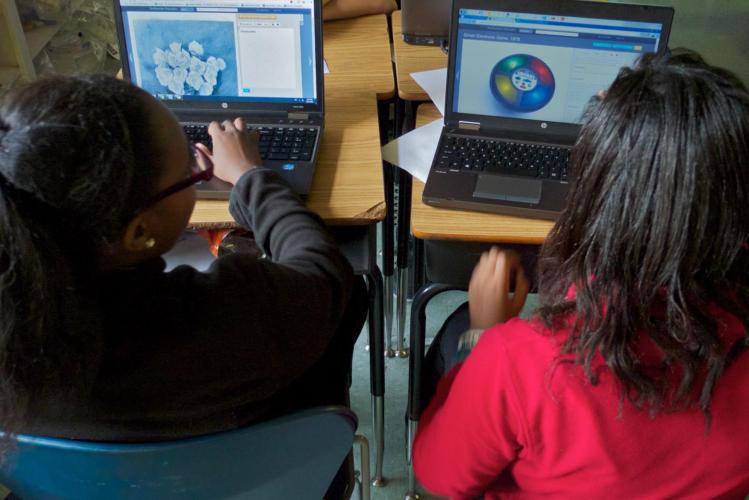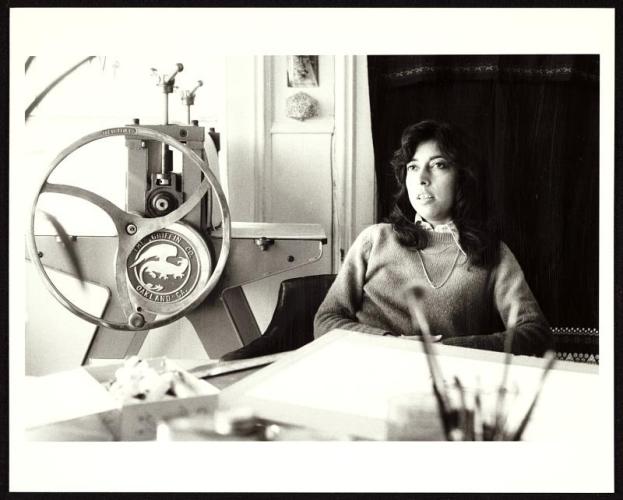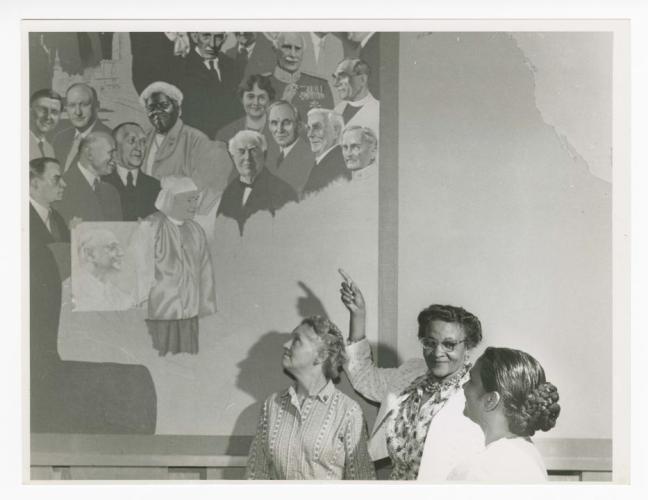
With many students currently learning from home, Smithsonian Learning Lab offers schools, caregivers, and interested students a place to dig into history, art, culture, science, technology, and more. Smithsonian educators have created collection sets of resources that include objects, videos, articles, and more that fit a galaxy of different themes.
If you have students who are learning from home, invite them to act as "history detectives," using the images in Learning Lab to discover why these objects are part of the Smithsonian's collections.
Closely examining a museum object is a skill that all detectives need to practice. This Reading Portraiture guide from our National Portrait Gallery can help hone visual investigation skills.
Here are five women who made their mark on American history who students can learn more about through Smithsonian Learning Lab. Most of the resources linked below were designed for middle school students and up, with the exception of those related to Ibtihaj Muhammad, which were designed for elementary students in mind.
1. Carmen Lomas Garza
Carmen Lomas Garza is a painter and printmaker. She helped ensure Mexican American representation in children's books. Her work documents the lives of Mexican Americans, including her own family memories of South Texas in the 1980s. The Chicano movement of the 1960s and 1970s helped give her new pride in her mixed Native American and Spanish ancestry. She hoped that by painting positive Mexican American activities, her art might help eliminate the racism she experienced as a child. In this Learning Lab collection, see her paintings in the collection of our Smithsonian American Art Museum and Renwick Gallery and a timeline of U.S.–Mexican American relations up to 2010.

Carmen Lomas Garza, 1982. Tomás Ybarra-Frausto research material on Chicano art, 1965-2004. Archives of American Art, Smithsonian Institution.
2. Kitty Cone
In 1977, Kitty Cone and about 150 fellow disability rights activists occupied a federal building in San Francisco for more than three weeks. They demanded that the federal government protect their rights by signing and implementing Section 504 of the Rehabilitation Act of 1973. Section 504 said no program that received federal funds could discriminate against people with disabilities. By occupying the federal building, Cone and her fellow activists helped ensure that government officials signed Section 504. Section 504 paved the way for the American with Disabilities Act, passed 13 years later. In this Learning Lab collection, watch a video where National Museum of American History curator Katherine Ott and student Ren discuss Cone's impact on their lives today.
3. Frances Mary Albrier
Frances Mary Albrier worked as a nurse, maid, and union organizer during her career. In total, she worked in community activism for six decades. Her career included many firsts: she became the first African American woman to campaign for city council in Berkeley, California. She fought discrimination to win a job as the first African American woman welder at Kaiser Shipyards during World War II. She created the first Negro History Week displays to be shown in an Oakland, California, department store window. She fought for the rights of fellow African Americans, senior citizens, and people with disabilities. In this Learning Lab collection, see a photo of her with San Francisco Mayor John Shelley as they recognize "Negro History Week." The photo is now in the collection of our National Museum of African American History and Culture.

Photograph of Frances Albrier wearing a Red Cross uniform. Collection of the Smithsonian National Museum of African American History and Culture, Frances Albrier Collection.
4. Clara Lemlich
Clara Lemlich was a 20th-century Jewish immigrant and activist in New York's garment industry. She called for a general strike for New York City workers in the garment industry. The strike, known as the New York Shirtwaist Strike of 1909, demanded fair wages, shorter hours, better treatment by bosses, and an end to evening work. The strike earned the workers higher wages and shorter hours, but the strike didn't end dangerous working conditions. On March 25, 1911, a fire started inside the Triangle Shirtwaist Factory. One hundred and forty six people died, mostly immigrant women in their teens and 20s. The fire motivated Frances Perkins, who later became the first woman appointed to a presidential cabinet as Labor Secretary. During Perkins' tenure, child labor was abolished, minimum wage was enacted, and other key labor reforms were implemented. In this Learning Lab collection, see photos of their working conditions and what outfits the workers wore on strike, plus additional resources from our National American History Museum.
5. Ibtihaj Muhammad
American saber fencer Ibtihaj Muhammad became the first Muslim American athlete to compete wearing a hijab, the traditional head covering of Muslim women. She also became the first Muslim American woman to earn an Olympic medal. Before Nike developed a pro hijab, many Muslim athletes had to improvise. Muhammad competed in a children's hijab made of a material that got heavy and stiff with sweat. Over the course of matches, fencing in the hijab obstructed her hearing so she could not hear when a match started. In this Learning Lab collection from our Cooper Hewitt, Smithsonian Design Museum, watch an interview with Muhammad and see how other types of Muslim American athletes (skaters and boxers) compete in hijabs.
There are so many more women to explore in Learning Lab! Here are just a few more notable women in science, art, women's suffrage, and sports to discover.